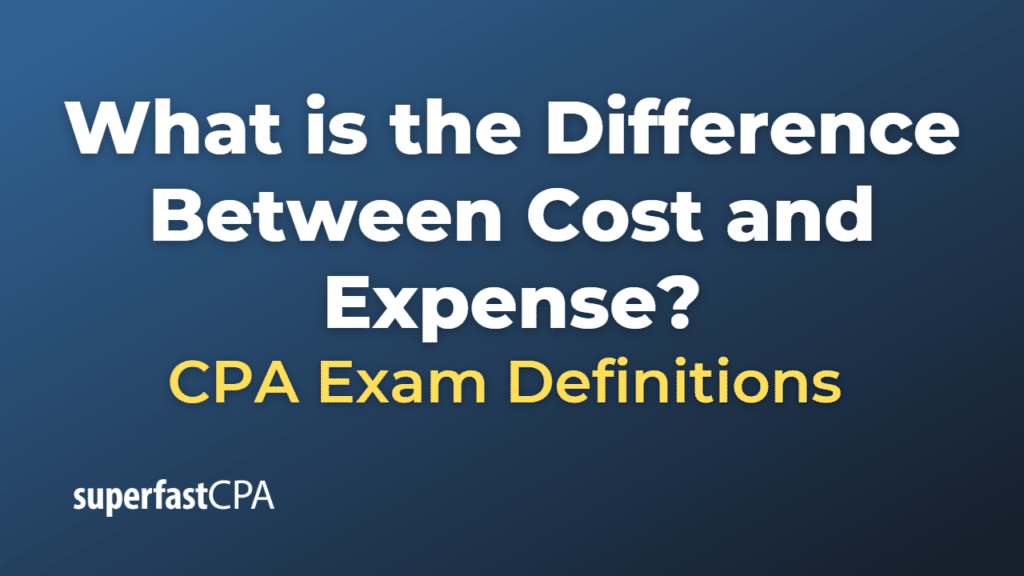Difference Between Cost and Expense
In accounting, the terms “cost” and “expense” are often used interchangeably, but they do have distinct meanings:
- Cost: A cost represents the amount of money that is used to produce goods or services – the total money, time, and resources associated with a production or an operation. It is not necessarily recognized immediately in the income statement, the main financial statement for reporting a company’s profitability. The cost of an asset (like a machine or a building) is typically capitalized and then allocated over the useful life of the asset as depreciation expense in the income statement.
- Expense: An expense is a cost that has been used up or has been incurred in the process of generating revenues. In other words, expenses are the costs of doing business. They are deducted from revenues to determine the company’s net income (profit or loss) for a specific period. Examples of expenses include salary expense, rent expense, and interest expense.
In essence, all expenses are costs, but not all costs are expenses. A cost becomes an expense when the benefit of the cost is consumed and it contributes to revenue. For example, the cost of raw materials becomes an expense when the materials are used up in the production process to create a product that is sold.
Example of the Difference Between Cost and Expense
Let’s consider a hypothetical company, “BakeryCo”, which operates a bakery:
Cost:
Suppose BakeryCo purchases a new oven for $10,000, which is expected to last for 10 years. This $10,000 is a cost to BakeryCo, and the oven is a capital asset. Rather than expensing the entire cost of the oven immediately, BakeryCo capitalizes it. That is, it spreads the cost over the expected useful life of the oven (10 years in this case). This is done through a process called depreciation.
Expense:
Each year, BakeryCo will record a portion of the oven’s cost as an expense. If BakeryCo uses straight-line depreciation (a method that spreads the cost evenly over the asset’s useful life), it will record $1,000 ($10,000 / 10 years) as a depreciation expense each year. This expense is recorded in the income statement and reduces the company’s taxable income.
Additionally, consider the flour BakeryCo buys to bake bread. The cost of the flour becomes an expense (specifically, part of the “cost of goods sold” or COGS) when BakeryCo uses the flour to bake bread that is then sold.
In this example, the initial purchase price of the oven is a cost. This cost is then transformed into an expense (depreciation expense) over time. The cost of the flour is transformed into an expense (part of COGS) when the flour is used to bake bread that is sold.













